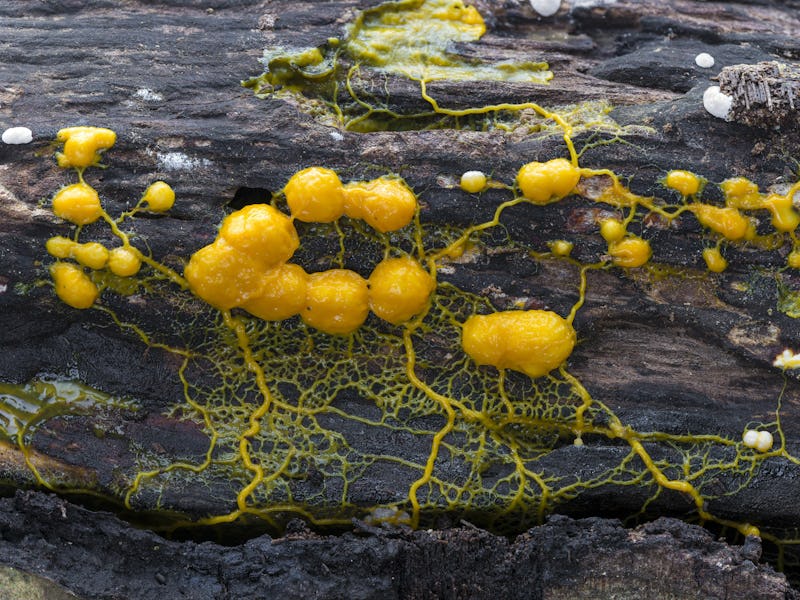The Blob, Paris Zoo's slime mold, is even freakier than it looks
It can 'reason' like an animal.

Last Saturday, the Paris Zoological Park unveiled a new specimen, and even though it’s at the zoo, it’s not an animal. It’s called a slime mold, and it’s probably the coolest organism you’ve never heard of. Not a plant, nor even a fungus, the slime mold belongs to the kingdom Protista, an ancient group of organisms that predate animals in Earth’s history by many millions of years. In all this time on our planet, slime molds have developed some special survival strategies, including the ability to investigate their surroundings, reproduce when cut in half, and potentially even learn.
“The blob is really one of the most extraordinary things on Earth today, but it’s been here for millions of years, and we still don’t really know what it is,” Bruno David, president of the Natural History Museum, of which the Paris Zoological Park is a part, told AFP.
And while we may not really know what it really is, we certainly know a few of the things it does.
Physarum polycephalum slime mold.
The Blob makes decisions
In a 2016 study published in the Journal of the Royal Society Interface, a team of investigators showed that a slime mold could pass a specially adapted version of the ‘two-armed bandit’ problem. This test, which examines decision-making abilities, isn’t normally administered to an organism without a brain. Despite not having a brain, though, a Physarum polycephalum slime mold — the same species as the one in Paris — was able to investigate two separate food options in the test and devote its time, attention, and energy to harvesting the most nutritious one. In fact, this is the first time an organism without a brain was documented solving the two-armed bandit problem.
So how does the slime mold make decisions without a brain?
The entire slime mold is one cell, though it’s composed of many small units. These units communicate with each other by oscillating, and the team behind this study suspects that these oscillations allow different parts of the slime mold to communicate with the rest, conveying information about what each part is doing and enabling the whole organism to move around its environment and forage for food.
“The advanced problem-solving capacity of the slime mould, at a level previously demonstrated only in brained organisms, provides support for the view that many ‘lower’ organisms can perform cognition-like feats in the absence of a nervous system (often termed ‘minimal cognition,’” writes the team behind this study.
Decision-making isn’t the end of the wonders of The Blob, though.
The Blob can learn
In a 2008 study published in Physical Review Letters, a team of researchers showed that a slime mold can actually anticipate when an event will occur and prepare itself for it.
When they exposed a slime mold to consecutive pulses of electricity over multiple trials, they saw the organism slowed its speed right before the next pulse was about to hit — oh yeah, “speed” refers to the fact that it can move up to 2 inches an hour. Let’s see a fungus move that quickly!
Whether this behavior constitutes “learning” per se is up for debate, since this behavior could be seen as more of a reflex. But their experiments did show that the slime mold got better at slowing its speed in anticipation of the electrical pulse as time went on and it got more exposure to the stimulus.
So if you’re in Paris, go check out the slime mold at the zoo. You may not be able to see it move, but you can marvel at an organism older than humanity, whose behaviors are still barely understood by humans.